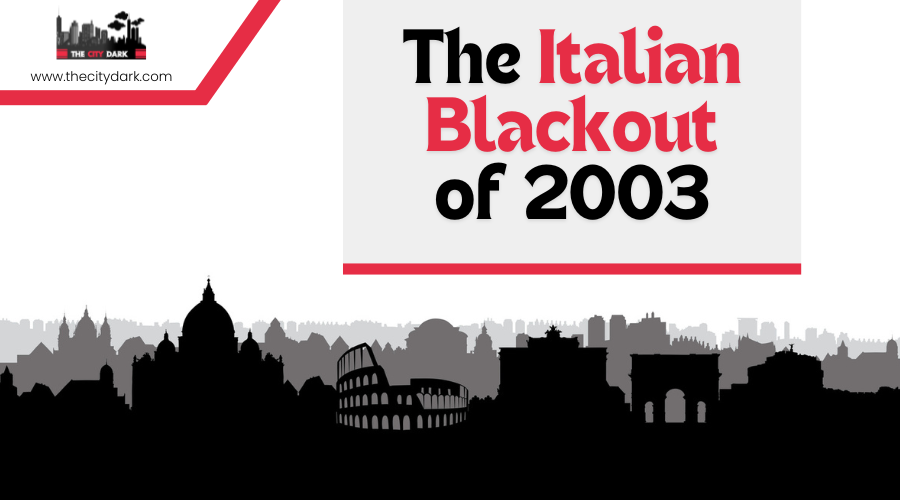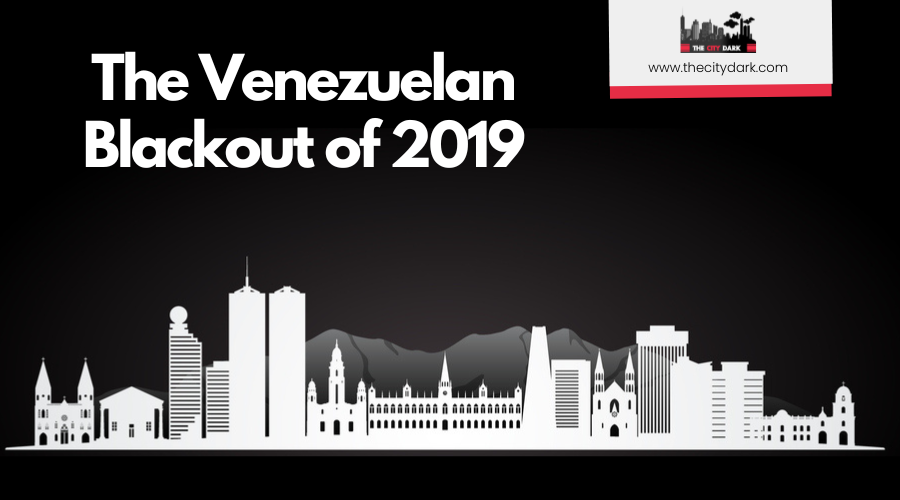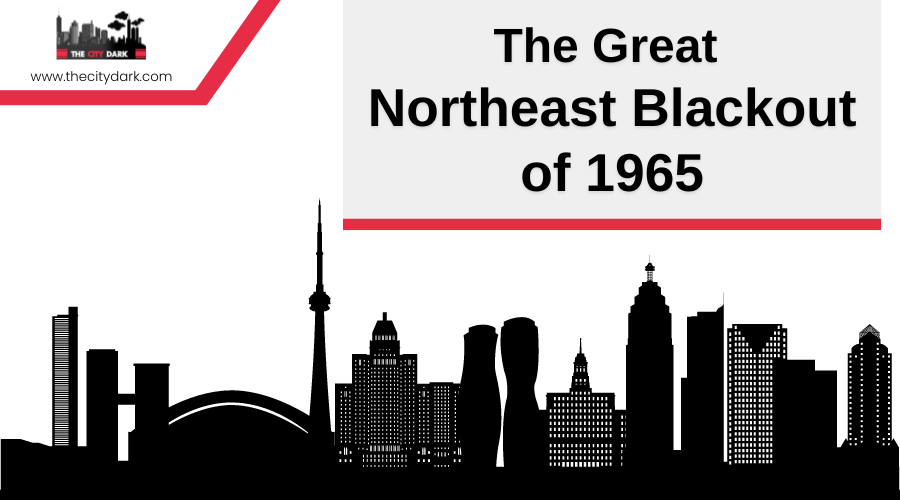The Indian Blackout of 2012

Imagine waking up to a world without electricity, where daily life grinds to a sudden halt. The Indian Blackout of 2012 did just that, plunging 670 million people into darkness and chaos. This massive power grid failure disrupted hospitals, halted trains, and created widespread panic in a country as vast as India. But what exactly went wrong? Why was the infrastructure so vulnerable? Let's delve into the sequence of events, the causes behind this unprecedented failure, and the urgent responses that followed.
Overview of the Blackout
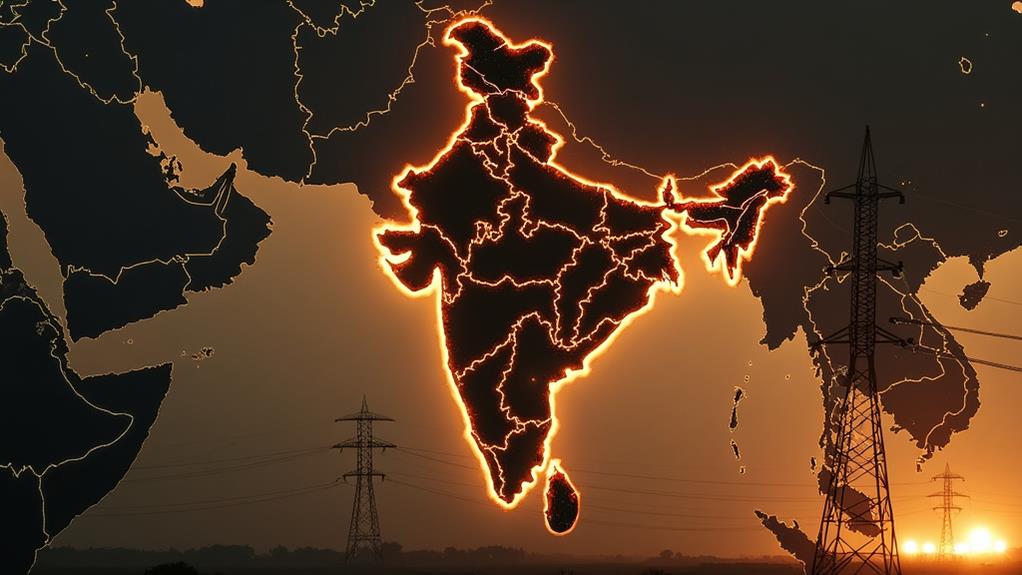
The Indian blackout of July 30-31, 2012, remains one of the largest power outages in history, affecting approximately 670 million people. This unprecedented event impacted 20 out of 28 states, including major areas like New Delhi. The crisis began on July 30 when the Northern Grid failed, leaving 350 million people without power for up to 14 hours. The situation escalated the following day with the simultaneous failure of the Northern, North-Eastern, and Eastern Grids.
The root cause of the blackout was excessive power overdrawing in the Northern region coupled with inadequate infrastructure. Poor monsoon conditions had increased agricultural electricity demands, pushing the already strained system to its limits. This surge in demand overwhelmed the electricity supply, leading to widespread disruptions.
Essential services were severely affected, stranding thousands of train passengers and causing traffic congestion in major cities. Hospitals had to rely on backup generators, exposing the fragility of the power network. The incident revealed significant vulnerabilities in India's power distribution system, highlighting the urgent need for improved grid management and infrastructure development to prevent future blackouts. This blackout served as a critical wake-up call, emphasizing the importance of a reliable electricity infrastructure.
Structure of the Indian Grid
India's electricity grid is divided into five regional grids: Northern, North-Eastern, Eastern, Western, and Southern. This structure ensures efficient power distribution across the country. The regional grids facilitate effective electricity management, directing power where it is most needed. The Eastern regional grid is particularly crucial as it hosts the majority of coal-fired thermal power plants, which generate about two-thirds of India's electricity. This configuration enables efficient electricity transfer to high-demand areas, such as the Northern States.
Maintaining stability in such a massive system is achieved through the National Load Dispatch Centre (NLDC), which oversees inter-regional power exchanges. Each regional grid has its own Regional Load Dispatch Centre (RLDC) responsible for maintaining balance and stability within its jurisdiction. This layered approach ensures efficient and effective power distribution.
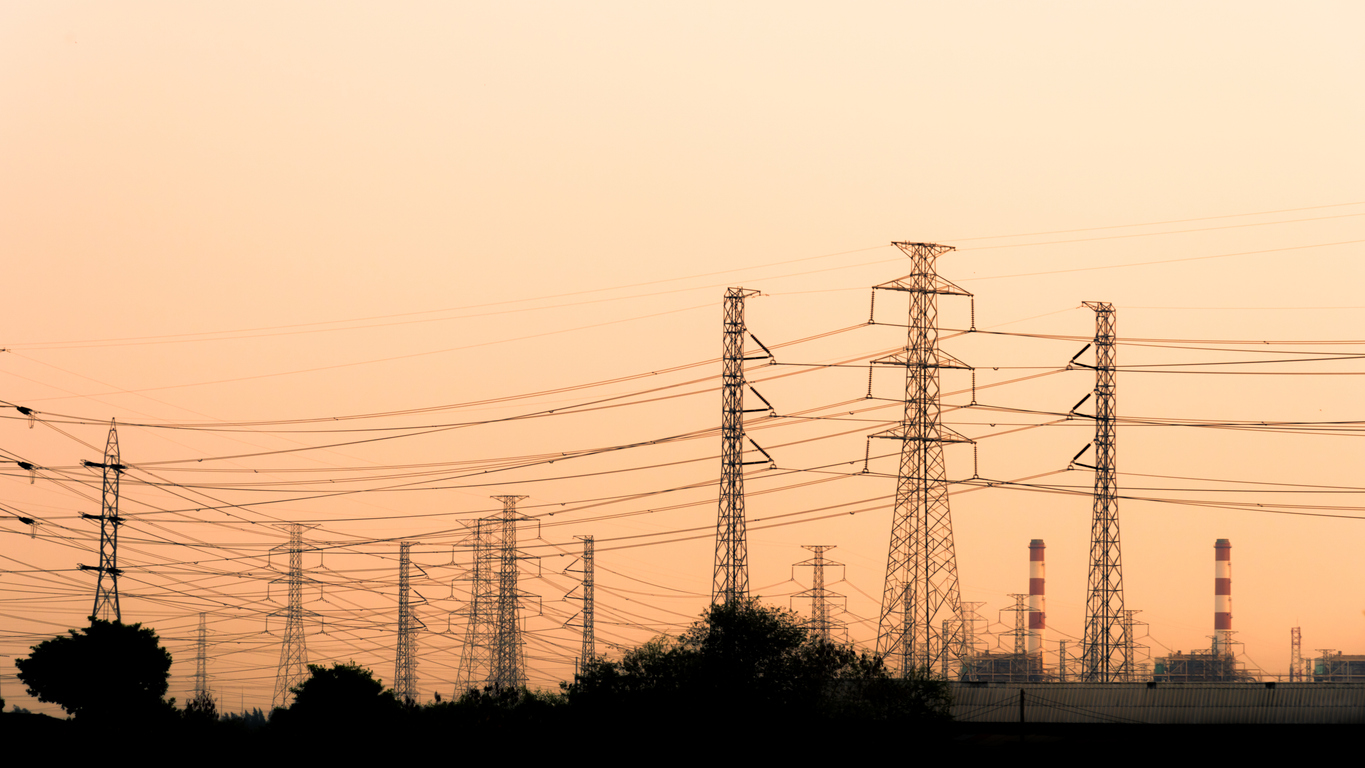
The grid operates at a frequency of 50 Hertz, which is essential for the proper functioning of electrical appliances and the durability of infrastructure. Maintaining this frequency standard is particularly important for stability across regions with varying power demands, like the Northern States. By balancing supply and demand through extensive inter-regional power flows, India's grid remains the backbone of the country's electricity supply.
Events Leading to the Blackouts
In July 2012, a series of critical missteps and unfortunate circumstances culminated in India's most significant power crisis. The initial blackout on July 30 was triggered by a heavy overdraw of 2000 MW by Northern States, while Western States over-supplied by 2700 MW. This imbalance severely strained the National Grid, jeopardizing system security. Compounding these issues, the failure of the South-West monsoon increased agricultural demand for electricity in the Northern region, exacerbating existing power shortages.
With only two of the four 400 kV West-North interconnections operational, the load on these remaining lines surged, ultimately leading to the grid's collapse. This primary failure set the stage for a second, even more devastating blackout on July 31, which affected 670 million people across multiple states, marking it as the largest blackout in history.
Political pressures and inadequate monitoring further complicated matters. Despite known vulnerabilities in the system, continued power draw from the grid was allowed, contributing to the cascading failures. As a result, these blackouts occurred, plunging much of the country into darkness and highlighting significant issues within India's power supply and system security.
Immediate Impacts
During the July 2012 blackouts, massive transportation disruptions left thousands of train passengers stranded and caused severe traffic congestion in major cities. Hospitals were forced to cancel surgeries and rely on backup generators. Public safety concerns escalated as crematoriums halted operations and hundreds of miners were trapped underground.
Transportation System Disruptions
The 2012 Indian blackout immediately crippled the nation's transportation systems. Hundreds of trains came to a standstill, leaving thousands of passengers stranded for hours. Imagine being stuck on a train, unsure when it will move again. This sudden halt in the rail network threw schedules into chaos and disrupted the daily routines of countless commuters.
In major cities like New Delhi, malfunctioning traffic lights led to severe congestion. Roads became gridlocked with honking cars and frustrated drivers. Public transport was also unreliable; buses and metro services faced delays or were entirely halted. Commuters experienced confusion and long waits, struggling to reach their destinations.
Essential services were also affected. Hospitals encountered their own challenges, and the strain on the transportation system exacerbated the overall crisis. The blackout exposed significant vulnerabilities in India's infrastructure, revealing that the country was unprepared for such large-scale power failures. The chaos on the roads and the immobilization of public transport underscored the urgent need for better contingency planning and more robust infrastructure to handle future emergencies.
Hospital and Emergency Strain

During the 2012 blackout, hospitals faced immediate and severe challenges as they struggled to keep critical equipment running on inadequate backup generators. Power outages led to the cancellation of surgical operations, delaying essential procedures and compromising patient safety. Medical staff were under immense stress, manually operating vital equipment when generators failed or provided limited power, thereby endangering lives.
Emergency services were severely strained, with hospitals experiencing significant difficulties in maintaining stable power supplies for life-saving machines. Patients in intensive care units, dependent on ventilators and other essential medical equipment, were particularly vulnerable. The situation was dire, with some patients facing life-threatening conditions due to these power outages.
Additionally, electric crematoriums ceased operations, exacerbating the distress for families in need of funeral services. The blackout highlighted the fragility of the healthcare infrastructure during such crises, emphasizing the necessity for preparedness and robust backup systems to ensure patient safety and maintain effective emergency services during widespread power outages.
Public Safety Concerns
Public safety faced substantial challenges during the 2012 blackout, which left approximately 620 million people without power, severely disrupting vital services such as transportation and healthcare. Hundreds of trains were stranded, leaving passengers without essential supplies for extended periods. Emergency services struggled to respond effectively amid the chaos, highlighting significant vulnerabilities.
Healthcare facilities, especially those dependent on backup generators, encountered critical issues. Power outages led to equipment malfunctions, putting patients' lives at risk and underscoring the fragility of healthcare infrastructure during such crises. Traffic light failures caused severe congestion in major cities, making it difficult for emergency vehicles to navigate through crowded streets and exacerbating public safety concerns.
The blackout's impact extended to electric crematoriums, halting operations and causing distress for grieving families unable to perform last rites. Overall, the blackout exposed significant weaknesses in public safety systems, emphasizing the urgent need for more robust infrastructure and comprehensive emergency preparedness plans.
Causes and Contributing Factors
The Indian blackout of 2012 was primarily triggered by northern states overdrawing electricity, exceeding their limits by approximately 2,000 MW. This excessive draw, combined with the failure of critical transmission lines, increased the grid's vulnerability. Furthermore, inadequate coordination and heightened agricultural demand contributed to the crisis.
Overdrawn Electricity Demand
In 2012, India experienced one of the largest blackouts in history, primarily caused by Northern States overdrawing electricity by 2000 MW beyond their allocated limits. This excessive demand strained an already fragile power distribution system, creating a significant supply-demand imbalance. The failure of the South-West monsoon increased agricultural power demand in these regions, further stressing the grid.
Simultaneously, Western States were oversupplying by 2700 MW, leading to severe regional discrepancies and increasing the power distribution system's vulnerability. Only two out of the four 400 kV West-North interconnections were operational, adding extra strain on the remaining lines and pushing the system closer to failure.
Political pressures contributed to continued power draw despite the compromised system conditions, underscoring a lack of effective grid discipline and management. These combined factors created a perfect storm, resulting in the massive blackout. Addressing these systemic issues and improving grid management are essential to prevent future occurrences.
Transmission Line Failures
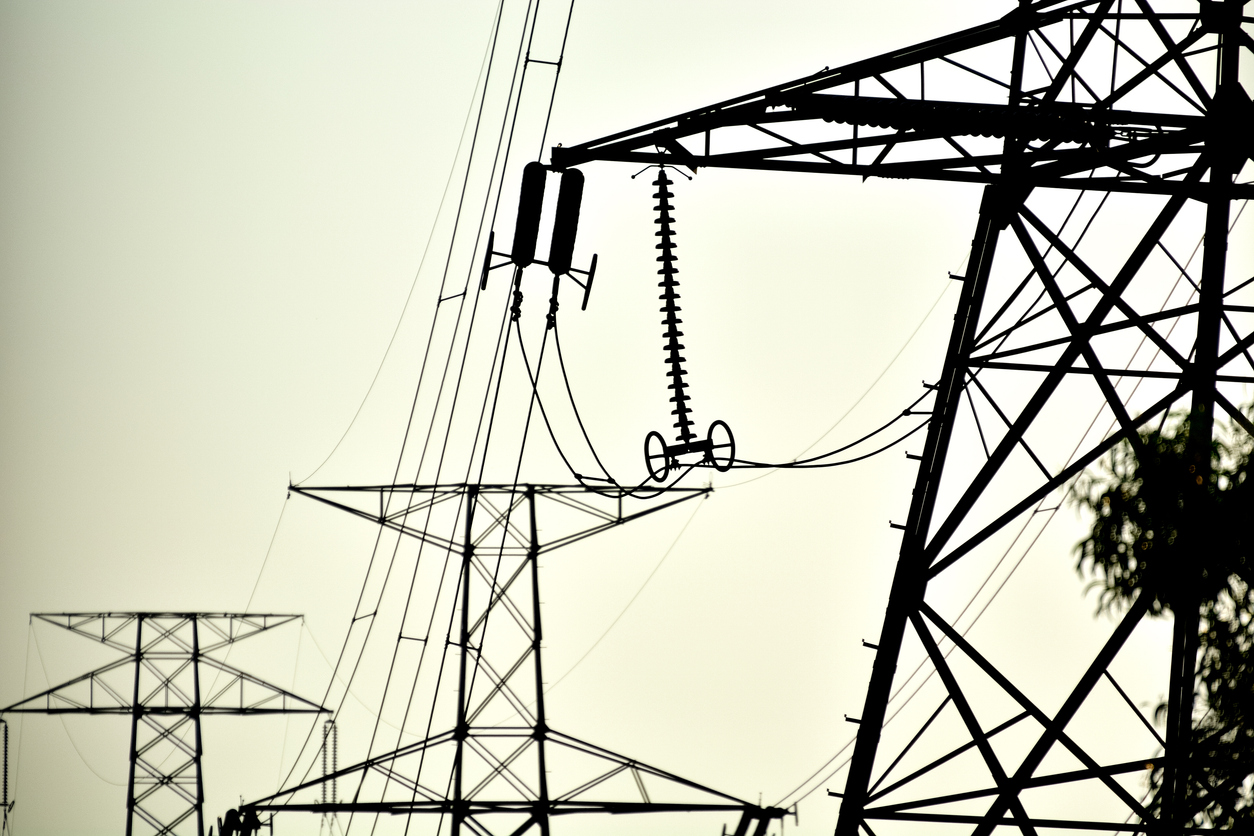
The 2012 blackout in India wasn't solely due to overdrawn electricity demand; it was significantly worsened by multiple transmission line failures. Out of four 400 kV West-North interconnections, only two were operational, putting excessive strain on the remaining lines and leading to instability. Systemic issues in grid management, such as poor coordination among state utilities and Load Dispatch Centres (LDCs), were crucial contributing factors.
| Cause | Effect | Result |
|---|---|---|
| Overdraw by Northern States | Strained transmission lines | Imbalances |
| Oversupply from Western States | Increased load | Instability |
| Inadequate maintenance | Vulnerabilities | Line failures |
| Failure of Under Frequency Relays (UFRs) | Lack of operational controls | Systemic issues |
| Heavy reliance on thermal power generation | Slow ramp-up times | Delayed recovery |
Inadequate maintenance and monitoring of transmission infrastructure created vulnerabilities. The failure of Under Frequency Relays (UFRs) underscored the lack of effective operational controls. Furthermore, the heavy reliance on thermal power generation, which requires 6-8 hours for ramp-up, delayed recovery efforts. These systemic issues in grid management, combined with overdraws and oversupplies, exacerbated the challenges posed by transmission line failures during peak demands.
Government and Public Response
In the wake of the 2012 Indian blackout, the government faced intense criticism for its handling of the crisis that left over 670 million people without power. Opposition parties quickly pointed to mismanagement and called for greater accountability. Public sentiment was overwhelmingly negative as frustrations grew over the lack of clarity surrounding the causes of the grid failures and the disruptions to daily life.
The government attributed the blackout to excessive power overdrawing by northern states. The Power Minister announced punitive measures for states exceeding their power quotas to prevent future occurrences. Emergency meetings were convened, and additional resources were deployed to restore power, but the public remained dissatisfied.
A ministerial reshuffle took place amidst the crisis, aiming to improve oversight and management of the power sector. Despite these efforts, many believed the government had failed to adequately address the root issues.
Key points to reflect on:
- Accountability: Opposition parties demanded greater government accountability.
- Public Sentiment: Rising frustration with authorities due to disruptions.
- Power Sector Management: Changes in ministerial responsibilities to improve oversight.
- Preventative Measures: Announced punitive actions against states overdrawing power.
Restoration Efforts and Challenges
Restoring power after the massive blackout in July 2012 was a formidable challenge, marked by numerous technical and logistical obstacles. Reactivating the three 400 kV links between the Northern and Western regions faced repeated failures, leading to further shutdowns and exposing systemic vulnerabilities in grid management. The process of reactivating generators was painstaking, especially for thermal power plants, which required 6-8 hours to ramp up.
The reactivation had to be meticulously staged to match the connected loads. Critical infrastructure like New Delhi Airport and major hospitals relied on backup systems, mitigating some immediate impacts. Industrial setups with Captive Power Plants (CPPs) managed to minimize production disruptions, alleviating some pressure. However, the initial blackout caused cascading failures, complicating the overall restoration of grid operations.
Despite continuous efforts, restoring power to all affected areas took considerable time. This delay highlighted the fragility of the power system and emphasized the urgent need for better coordination among utilities. The blackout served as a stark reminder of the inherent challenges in grid management and the necessity for robust contingency planning.
Long-term Implications
Reflecting on the restoration challenges, the 2012 blackout revealed significant long-term implications for India's power sector. This event highlighted critical vulnerabilities, necessitating immediate infrastructure upgrades and systemic reforms.
Here are four key long-term implications:
- Infrastructure Modernization: The blackout exposed the power distribution system's fragility, underscoring the urgent need for substantial investments to modernize and strengthen the infrastructure to prevent future failures.
- Regulatory Reforms: The crisis emphasized the need for comprehensive regulatory reforms. Enhanced coordination among state utilities and clearer regulations are essential to prevent such large-scale disruptions.
- Renewable Energy Integration: Diversifying energy sources became imperative. Integrating renewable energy, such as solar and wind, is crucial for creating a more resilient and sustainable power grid.
- Grid Stability: Improving real-time monitoring and situational awareness among Load Dispatch Centres is vital. Enhanced grid stability mechanisms are required to manage demand and supply effectively.
These lessons provide not only retrospective insights but also fundamental steps toward a more secure and reliable future for India's power sector.
Future Recommendations

To safeguard against future blackouts, India's power sector must strictly adhere to grid discipline and operational protocols among utilities. Ensuring compliance with these standards will prevent grid instability and minimize risks. Modernizing diagnostic equipment is essential for improving real-time monitoring capabilities, enabling Load Dispatch Centres (LDCs) to maintain better situational awareness and respond promptly to any issues.
Reviewing the Unscheduled Interchange (UI) mechanism is crucial. Preventing its abuse will encourage states to commit to more reliable long-term supply contracts, thereby enhancing the overall stability of the power supply.
Investing in decentralized renewable energy sources is another vital step. With the cost of solar power and other renewables dropping significantly, these sources offer a viable and sustainable alternative to traditional fossil fuels. This not only helps stabilize the grid but also promotes environmental sustainability.
Comprehensive policy reforms are needed to address urban and rural disparities in power access. Implementing these changes will ensure a stable, reliable, and sustainable energy future for all regions of India. These reforms will help stabilize the power supply and ensure consistent, equitable access across the country.

